#Egyptian Civilization
Explore tagged Tumblr posts
Text
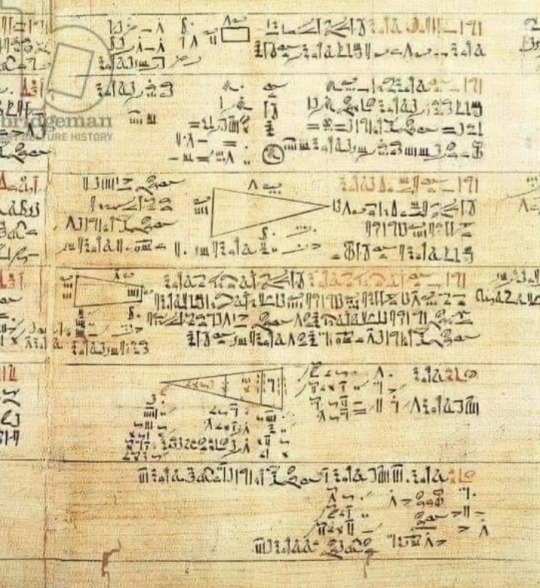
Papyrus of Ahmose or Mathematical Rhind (1500 BC / 1550 BC) is the oldest manuscript written in Algebra and Trigonometry.
Manuscript shows that Egyptians used first-order equations and solved them in several ways.
They know quadratic equations and solve them. They also know numerical and geometric sequences and know quadratic equations like two :
X2 + y2 = 100,
Y = 3/4 x, where x = 8, y = 6,
This equation is the origin of Pythagoras theorem, a2 = b 2 + c 2, and Egyptians used to call unknown number (koom).
Pythagoras developed his mathematical theories after travelling to Egypt and learning from Egyptian priests.
This has been proven in books of Greek historians and scholars such as Farpharius of Sour, Herodotus, and Thales.
Egyptians had Algebra, Trigonometry, and Geometry about 2000 years before the birth of Pythagoras and about 3000 years prior to al-Khwarizmi being born.
—
The Rhind Mathematical Papyrus (RMP; also designated as papyrus British Museum 10057 and pBM 10058) is one of the best known examples of ancient Egyptian mathematics.
It is named after Alexander Henry Rhind, a Scottish antiquarian, who purchased the papyrus in 1858 in Luxor, Egypt.
It was apparently found during illegal excavations in or near the Ramesseum. It dates to around 1550 BC.
#Papyrus of Ahmose#Mathematical Rhind#Rhind Mathematical Papyrus#manuscript#Pythagoras#Pythagoras Theorem#Ancient Egyptian Mathematics#Ancient Egypt#Alexander Henry Rhind#papyrus#Achaeo Histories#algebra#geometry#mathematics#Ahmes#Ahmose#Egyptian civilization#Trigonometry#mathematical theories#Hieroglyphs#Ramesseum
91 notes
·
View notes
Text
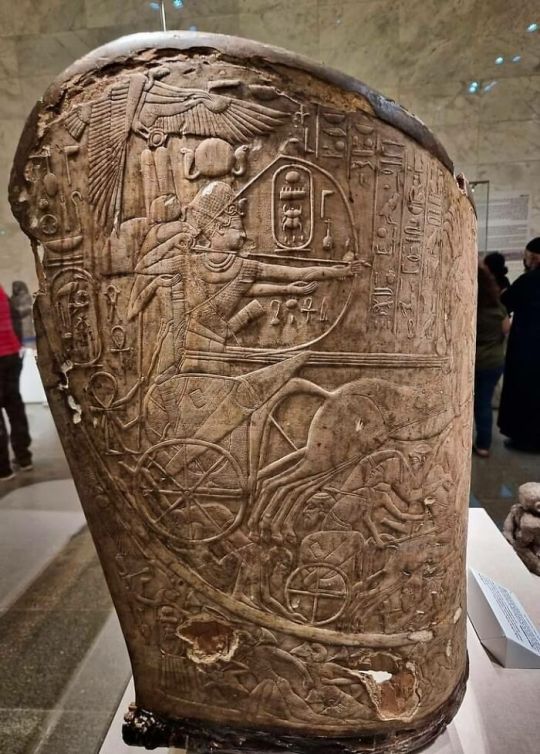
#بلادي_الجميلة ❤ #مصر ❤ The Well Preserved State Chariot Of Pharaoh Thutmose Iv (R. 1401-1388 Bc, 18th Dynasty), Showing Pharaoh Smiting His Enemies. It Was Discovered From His Tomb Kv43, Luxor, Egypt , Museum Of Egyptian Civilization, Cairo
#egypt#مصر#ancient egypt#مصريات#love#war#wars#war chariot#chariot#egyptian#Egyptian civilization#civilization#art#ancient#ancient art#ancientmonuments#ancient history#history#dynasty#thutmose#18th dynasty#life#بلادي الجميلة#museum#ancient architecture#protection#enemy#enemies#artifact#ancient artifacts
24 notes
·
View notes
Text
The Great Pyramid of Giza: A Timeless Enigma
The Great Pyramid of Giza, also known as Khufu’s Pyramid, stands as one of the most iconic and mysterious achievements of human civilization. Constructed around 2560 BCE during Egypt’s Fourth Dynasty, it is the largest and oldest of the three pyramids at Giza and the only surviving wonder of the ancient world. This monumental structure, built to honor Pharaoh Khufu, continues to captivate…

View On WordPress
#ancient Egypt#ancient workers#Archaeology#construction#desert#Egyptian civilization#engineering marvel#Giza#Great Pyramid#History#Mystery#pyramids#sunrise
6 notes
·
View notes
Text
Journey Through Time Discovering Egypt Wonders #Egypt,#AncientEgypt,#Pharaohs,#Pyramids,#Sphinx,#Ni
#Egypt,#AncientEgypt,#Pharaohs,#Pyramids,#Sphinx,#NileRiver,#Cairo,#Luxor,#TutankhamunTomb,#Cleopatra,#Hieroglyphics,#Mummies,#Archaeology,#EgyptianMythology,#EgyptianCulture,#EgyptTravel,#EgyptianArt,#GizaPyramids,#KingTut,#EgyptianGods,#Alexandria,#EgyptianTemples,#CairoMuseum,#EgyptianTombs,#RedSea,#Hieroglyphs,#NileCruise,#EgyptianMuseums,#EgyptianArtifacts,#EgyptianAntiquities,#EgyptianArchi…

View On WordPress
#Alexandria#ancient egypt#archaeology#Cairo#Cairo Museum#Cleopatra#egypt#Egyptian Art#Egyptian Civilization#Egyptian Culture#Egyptian desert#Egyptian Gods#egyptian history#Egyptian museums#Egyptian Mythology#Egyptian pharaohs#Egyptian Temples#Egyptian Tombs#Giza Pyramids#Hieroglyphics#Hieroglyphs#King Tut#Luxor#Mummies#mummy#Nile cruise#Nile River#Pharaohs#pyramids#Ramses II
0 notes
Text
Naqada II jars: Decorated Ware Jar Depicting Ungulates and Boats with African Figures:
The Naqada II jars are a fascinating archaeological find that sheds light on the cultural and religious practices of ancient Egypt. These intricately decorated vessels provide a glimpse into the beliefs and customs of the Naqada II period, a crucial era in the prehistoric development of Egyptian civilization. Crafted with remarkable skill and attention to detail, the images adorning these jars…
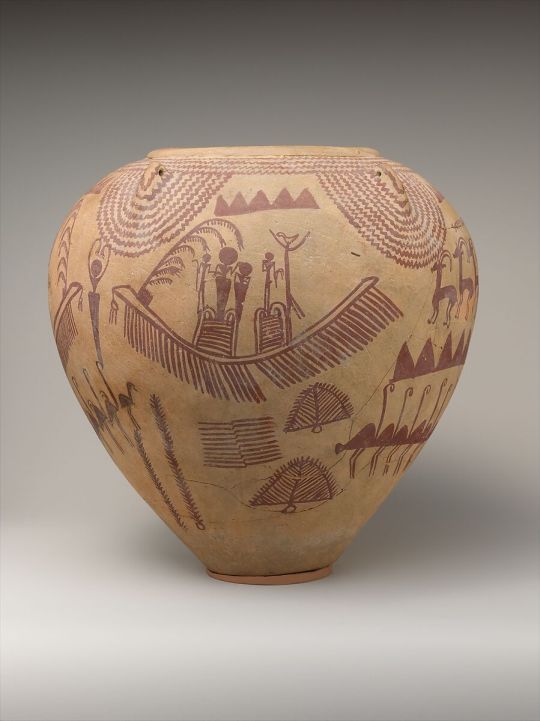
View On WordPress
#African artifact#African History#ancient Egyptian civilization#Ancient Egyptians#ancient egyptians history#Egyptian civilization#History of Sudan#Naqada II#Naqada II jars#Sudan art#Sudan history
1 note
·
View note
Text
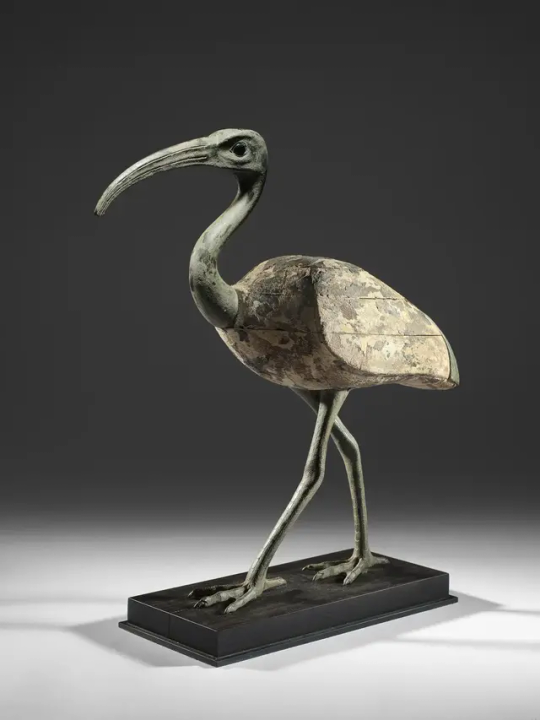
An Egyptian almost life-size bronze and wood striding ibis Late Period, circa 664-332 B.C.
#An Egyptian almost life-size bronze and wood striding ibis#Late Period#circa 664-332 B.C.#bronze#wood#ancient artifacts#archeology#archeolgst#history#history news#ancient history#ancient culture#ancient civilizations#ancient egypt#egyptian history#egyptian art#ancient art#art history
2K notes
·
View notes
Text


Akhenaten and Nefertiti
#egyptian history#ancient egypt#egyptian#egyptian pharaoh#akhenaten#nefertiti#ancient history#history#art#ancient sculpture#ancient civilizations
481 notes
·
View notes
Text

Beautiful Egyptian Faience Hippopotamus (2040-1638 BC); Middle Kingdom, ancient Egypt.
This statuette of a hippopotamus (popularly called "William") was molded in faience, a ceramic material made of ground quartz. A glass-like material associated with rebirth, Egyptian faience was often used to make grave goods, such as this hippopotamus.
#faience#ancient egypt#egyptology#egyptian#egypt#hippopotamus#antique#artifact#antiquities#toya's tales#style#toyastales#toyas tales#art#november#fall#art history#animal art#ancient history#ancient art#ancient#egyptian art#middle kingdom#ceramics#quartz#turquoise#folk art#world history#ancient civilizations
283 notes
·
View notes
Text

12:00 PM, October 2024.
The sun hangs heavy over the Great Sphinx of Giza.
#egypt#photography#art#cairo#giza#great pyramid of giza#great sphinx of giza#sphinx#egyptology#ancient egypt#aesthetic#sky#history#vintage#ancient history#ancient art#ancient civilizations#ancient wonders#travel#desert#timeless#beauty#beautiful#lensblr#artists on tumblr#original photographers#photographers on tumblr#egyptian#egyptian mythology#dark academia
161 notes
·
View notes
Text
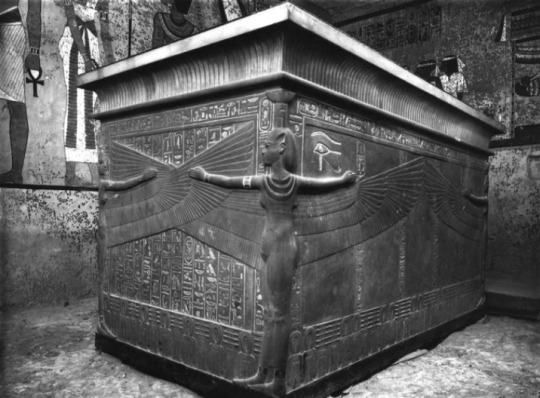
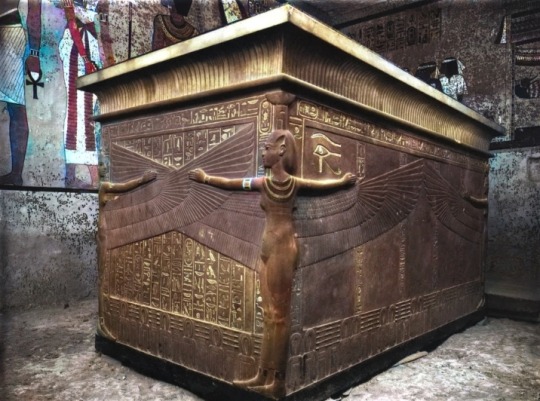
The sarcophagus in the burial chamber of King Tutankhamun, 1923.
📷: Harry Burton
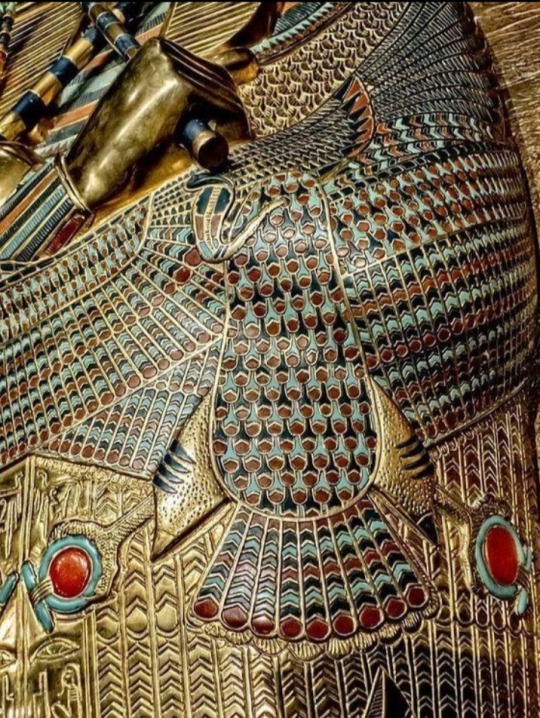
Closeup of the uraeus on the body of King Tutankhamun’s first inner coffin.
New Kingdom, 18th Dynasty Egypt, 1332-1323 BCE
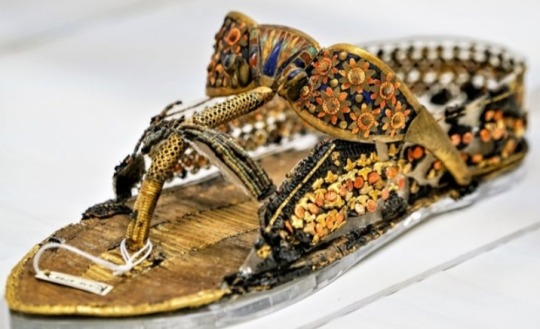
King Tutankhamun's sandal made of leather, gold and faience.
#King Tutankhamun#Ancient Egypt#Egyptian Civilization#Eighteenth Dynasty#KV62#pharaoh#Valley of the Kings#Tutankhamun's tomb#New Kingdom of Egypt#Tutankhamun's mummy#King Tut
8 notes
·
View notes
Text

I'm just saying that there's no heterosexual explanation for AJ, as the Champion, having a twink actually running Parkour Civilization.
#angel's art#parkour civilization#parkour yaoi#seawatt#evil champion#ajthebold#seawatt gaming#parkciv#I made this as propaganda because like I'm not joking what is the explanation of why AJ would have someone else control parkciv#but this is partially fueled by that OOC ParkCiv actors actually going against in their parkour AND AJ AND SEAWATT?? love them#absolutely insane funny and committed to the bit#anyway they have fucked because I said so#like are you telling me Seawatt wouldn't fuck someone for power?#if you say no I don't believe you#that man knows is pretty enough to pull it off#seaj#parkour champion#also I purposely made Egyptian-inspired and AJ Roman-inspired for reasons#which should be obvious if you know history#but also AU#because yeah me and a friend made a future AU with them and have a whole dynamic about it#it's great#hopefully they make that tumblr post
159 notes
·
View notes
Text
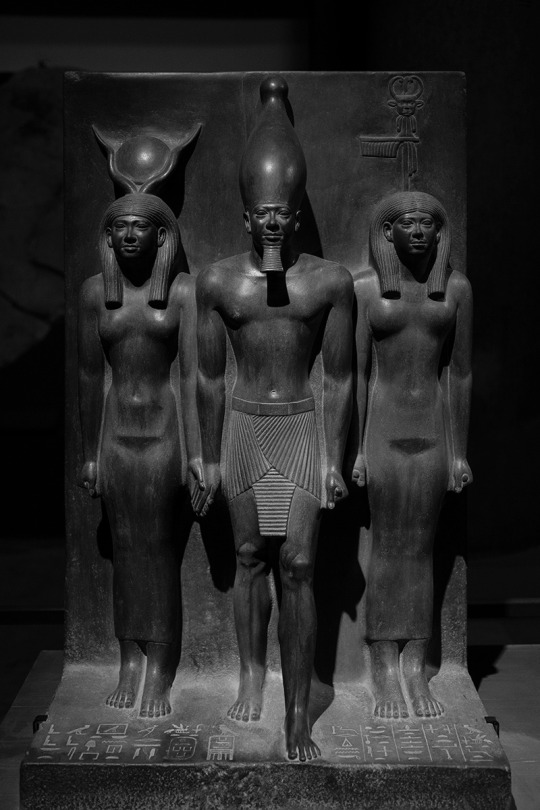


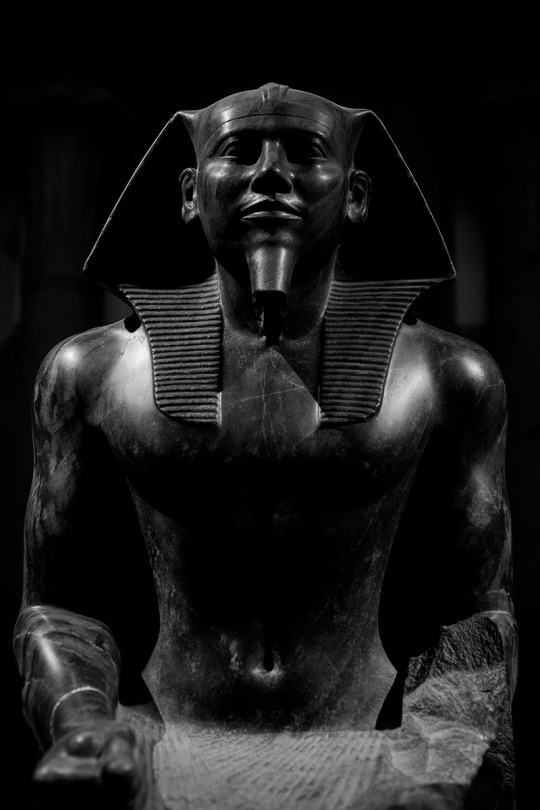
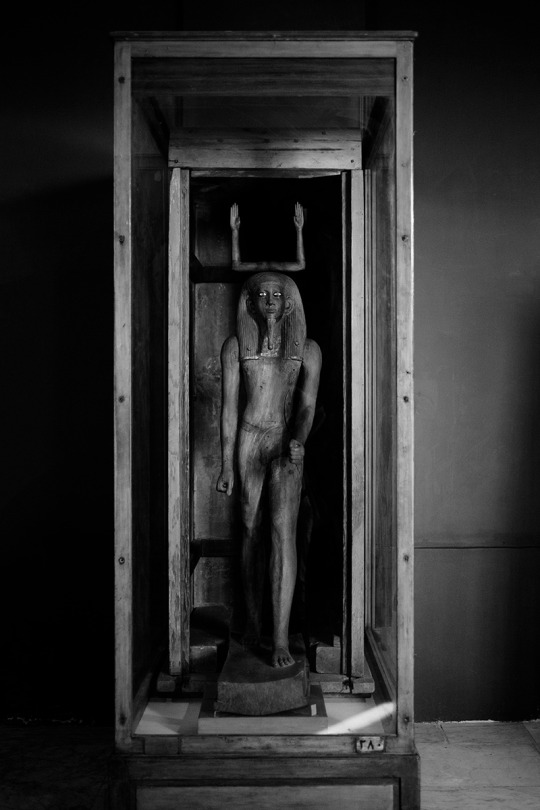
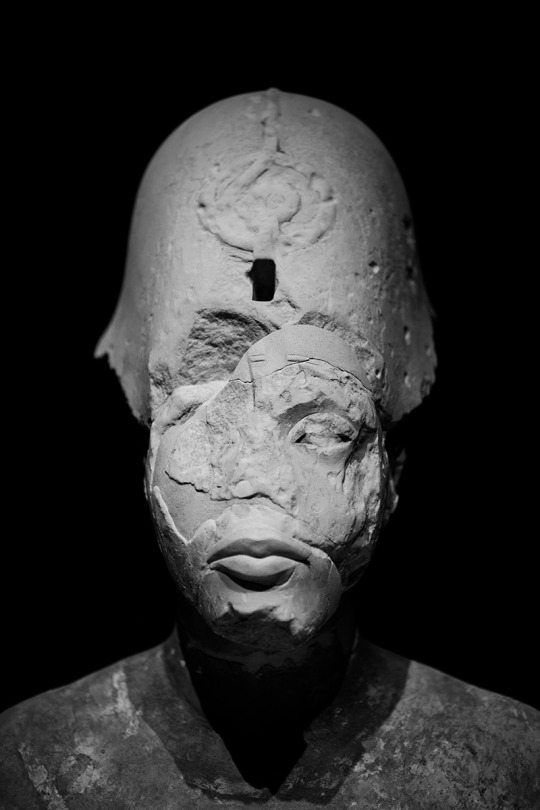
“They Have Already Landed”
(Cairo diary, 2022)
#cairo museum#ancient egypt#black and white#egyptian sculpture#ancient aliens#diary#sculpture photography#ancient civilizations#akhenaten#ka
640 notes
·
View notes
Text
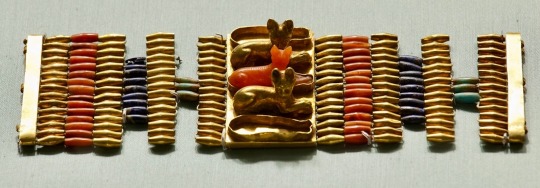
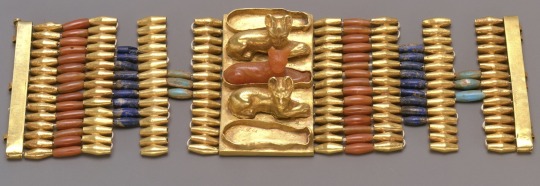
Egyptian
Cuff Bracelets Decorated with Cats
New Kingdom, ca. 1479-1425 B.C.E.
#egyptian art#Egyptian jewelry#ancient egyptian#ancient egypt#ancient art#ancient jewelry#ancient people#egyptian history#egyptian culture#egyptian cat#cat aesthetic#catblr#beautiful cats#cats in art#cat art#cat jewelry#aesthetic#beauty#jewelry#ancient civilizations#art history#aesthetictumblr#tumblraesthetic#tumblrpic#tumblrpictures#tumblr art#tumblrstyle#artists on tumblr#egyptology
352 notes
·
View notes
Text
Queen Tiye: Great Royal Wife of the Egyptian Pharaoh Amenhotep III
Queen Tiye of ancient Egypt was more than just a royal consort. She was a woman of remarkable influence and intelligence, wielding immense power during the reigns of both her husband, Pharaoh Amenhotep III, and her son, Pharaoh Akhenaten. Born around 1398 BC, she entered into marriage with Amenhotep III at the tender age of eleven or twelve, and her impact on Egyptian history and politics would…
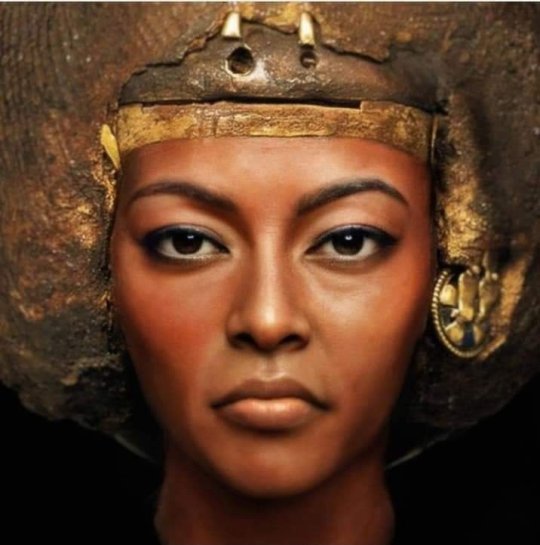
View On WordPress
#African History#ancient Egypt#ancient egyptian architecture#Ancient Egyptians#ancient egyptians history#Egyptian civilization#Egyptian History#history of ancient Egypt#Queen Tiye
0 notes
Text

Head of a cat Late Period–Ptolemaic Period, c. 664–30 B.C. The Met.
#Head of a cat#Late Period–Ptolemaic Period#c. 664–30 B.C.#cat#metal#metal sculpture#ancient artifacts#archeology#archeolgst#history#history news#ancient history#ancient culture#ancient civilizations#ancient egypt#egyptian history#egyptian art#ancient art
543 notes
·
View notes
Text

Nefertem x Brahma supremacy 🗿🪷🪷🪷
#ancient egypt#ancient india#egyptian history#egyptian mythology#brahma#egyptian gods#nefertem#nefertum#ancient cultures#ancient history#ancient civilizations#hindu mythology#hindu myths#hindu gods#hindublr#desiblr#desi tumblr#desi tag#desiposting#desi side of tumblr
481 notes
·
View notes